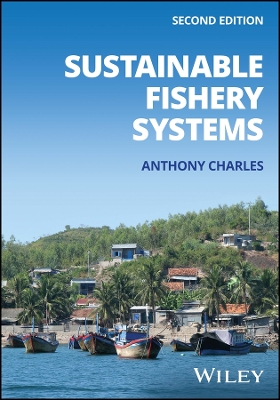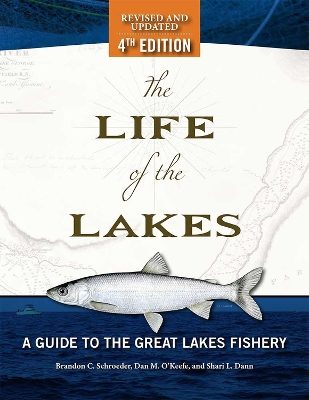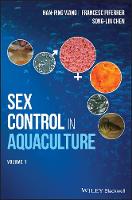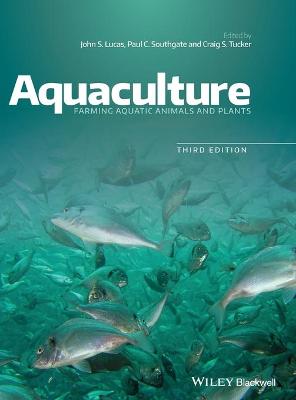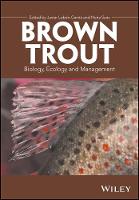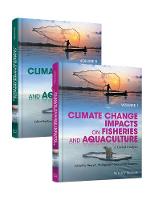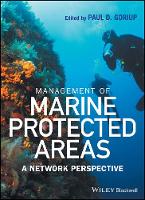Success Factors for Fish Larval Production
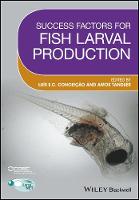 -15%
portes grátis
-15%
portes grátis
Success Factors for Fish Larval Production
Tandler, Amos; Conceicao, Luis
John Wiley and Sons Ltd
03/2018
512
Dura
Inglês
9781119072164
15 a 20 dias
1030
1 Introduction 1
Reference 2
2 Gamete Quality and BroodstockManagement in Temperate Fish 3
HerveMigaud, Gordon Bell, Elsa Cabrita, Brendan McAndrew, Andrew Davie, Julien Bobe, Maria Paz Herraez and Manuel Carrillo
Introduction 3
Egg and Sperm Quality and Assessment 4
Egg Quality 4
Sperm Quality 6
Germ Cell Preservation 8
Eggs 8
Sperm Storage and Management 8
Other Sources of Germplasm: Undifferentiated Germ Cells and Surrogate
Production 9
Knowledge Gaps and Research Needs 10
Broodstock Nutrition 11
Background 11
Salmonids 11
Bass, Bream and Related Sparids 13
Atlantic Cod 15
Flatfish 15
Carp 17
Knowledge Gaps and Research Needs 17
Applications of Genetics and Genomics to Broodstock Management 17
General Considerations and New Advances 17
Selective Breeding Programmes 18
Genetic Markers 22
Functional Genomics 23
Chromosome Set Manipulation 24
Gene Transfer Technologies 26
Knowledge Gaps and Research Needs 27
Broodstock Environmental and Hormonal Manipulations 27
General Concepts 27
Entrainment of Reproduction: Proximate Factors 28
Photoperiod Regimes Used in Aquaculture 30
Temperature as an Ultimate Factor 31
Spawning Induction Techniques 32
Knowledge Gaps and Research Needs 35
Overall Conclusions 35
Acknowledgements 38
References 38
3 Feeding Behaviour and Digestive Physiology in Larval Fish: Current Knowledge, and Gaps and Bottlenecks in Research 55
Ivar Ronnestad, Manuel Yufera, Bernd Ueberschaer, Laura Ribeiro, Oystein Saele and Clara Boglione
Introduction 55
Feeding Behaviour and Appetite 56
Detection 56
Capture and Ingestion 59
Feeding Rhythms 61
Neuroendocrine Control of Appetite and Ingestion 61
Adaptation of Feeding Protocols to the Feeding Behaviour 63
Digestive Physiology 63
Ontogeny and Plasticity of the Digestive System 63
Accessory Digestive Organs 66
IntestinalModelling and Remodelling 67
Digestion: An Overview 69
Digestion of Proteins and Peptides 70
Pancreatic Enzymes 70
Enzymes in the Mucosal Layer 75
Exogenous Enzymes 75
Absorption 76
Free Amino Acids 76
Peptides 77
Whole Proteins 78
General Protein-Processing Capacity 79
Gut Transit Rate Versus Dietary Protein Utilization 80
Lipids 82
Preintestinal Digestion of Lipids 82
Intestinal Lipid Digestion 83
Overall Processing Capacity for Lipids 85
Digestion of Carbohydrates 86
Regulatory Systems of Digestion 87
Gastrointestinal Tract Hormones 89
Other Gastrointestinal Tract Hormones 92
Enteric Nervous Systems 92
Future Research Strategies for Studies in Feeding Behaviour and Digestive
Physiology to Advance Larval Rearing of Marine Fish 93
Acknowledgements 96
References 96
4 Fish Larval Nutrition and Feed Formulation: Knowledge Gaps and Bottlenecks for Advances in Larval Rearing 123
Kristin Hamre, Manuel Yufera, Ivar Ronnestad, Clara Boglione, Luis E. C. Conceicao and Marisol Izquierdo
Introduction 123
Larval Nutrition 124
What are the Larval Nutrient Requirements? 124
Direct Measurements of Larval Requirements, for Example
Dose-Response 125
Macronutrients 125
Protein and Amino Acids 126
Lipid Class Composition 127
Essential Fatty Acids 129
Vitamins 132
Minerals 133
Indirect Measurements 134
Nutrient Utilization during the Yolk Sac Period 134
Amino Acids 135
Lipids 136
Vitamins 137
Nutrient Composition of Copepods 138
Larval Body Composition 142
Tracer Studies 143
Extrapolation from Juveniles 145
Feed Formulation 147
Live Feed Enrichment 147
Basic Levels of Nutrients in Rotifers and Artemia 147
Opportunities and Limitations in Enrichment of Live Feed 150
Formulated Diets 153
General Characteristics of Formulated Larval Diets 153
Types of Formulated Microdiets 154
Technical Limitations 155
Microdiet Formulation and Nutrition Experiments 156
Gaps and Bottlenecks in Obtaining Knowledge on Nutritional Requirements of Marine Fish Larvae 157
Acknowledgements 158
References 158
5 What Determines Growth Potential and Juvenile Quality of Farmed Fish Species? 177
Luisa M.P. Valente, Katerina A. Moutou, Luis E.C. Conceicao, Sofia Engrola, Jorge M.O. Fernandes and Ian A. Johnston
Introduction 177
Development of SkeletalMuscle 178
Embryonic, Larval and JuvenileMuscle Growth:The Origin and
Regulation of Myogenic Progenitor Cell Activity 178
Control of Muscle Mass 185
Protein Synthesis 185
Protein Degradation 186
Genetics of Muscle Growth 187
Environmental Factors and Growth 193
Seawater Temperature 193
Nutrition 194
Available Methodology to Assess Growth and Quality 195
Histology, Histochemistry and Immunohistochemistry 196
In situ Hybridization 196
Real-time PCR 197
Microarrays 197
Transcriptome Analysis and Genome Editing 198
Proteomics 200
Cell Culture 200
Tracer Studies 201
Concluding Remarks 201
Acknowledgements 202
References 202
6 Skeletal Anomalies in Reared European Fish Larvae and Juveniles. Part 1: Normal and Anomalous Skeletogenic Processes 219
Clara Boglione, Paulo Gavaia, Giorgos Koumoundouros, Enric Gisbert, Mari Moren, Stephanie Fontagne and Paul EckhardWitten
Introduction 219
Plasticity, Ontogenesis, Remodelling and Resorption of Skeletal Elements in Teleost Fish 225
Teleost Skeletal Tissues 225
The Notochord 227
Regulatory Mechanisms of Skeletal Tissues in Fish 228
Bone Formation and the Replacement of the Cartilaginous Anlage 228
Endochondral Ossification 229
Perichondral Ossification 230
Parachondral Ossification 231
Intramembranous Ossification 231
Modulation and Transformation 233
Dedifferentiation, Transdifferentiation and Metaplasia 233
Late Events in Teleost Skeletal Tissue Modelling and Remodelling 235
Bone Resorption and Remodelling 236
Osteocytic Osteolysis 237
Main Gaps in Scientific Knowledge and Further Research Needs 237
Acknowledgements 238
References 239
7 Skeletal Anomalies in Reared European Fish Larvae and Juveniles. Part 2:Main Typologies, Occurrences and Causative Factors 255
Clara Boglione, Enric Gisbert, Paulo Gavaia, Paul E.Witten, Mori Moren, Stephanie Fontagne and Giorgos Koumoundouros
Introduction 255
Early Developmental Anomalies 257
Vertebral Column Anomalies 261
Non-salmonid Group 262
Salmonid Group 265
Vertebrae Anomalies 266
Non-salmonid Group 267
Salmonid Group 268
Anomalies of the Fins 269
Skull Anomalies 271
Effects of Skeletal Anomalies on Fish Biological Performance 273
Causative Factors of Skeletal Anomalies in Reared Fish 274
Genetic Factors 274
Non-genetic Factors: Nutrition 277
Proteins and Amino Acids 278
Lipids and Fatty Acids 279
Vitamins 283
Minerals 294
Non-genetic Factors: Miscellaneous 297
SortingMethods 301
Elements of Solutions 301
Main Gaps in Scientific Knowledge and Further Research Needs 304
Acknowledgements 306
References 306
8 Microbiology and Immunology of Fish Larvae 331
Olav Vadstein, Oivind Bergh, Francois-Joel Gatesoupe, Jorge Galindo-Villegas, Victoriano Mulero, Simona Picchietti, Giuseppe Scapigliati, Pavlos Makridis, Yngvar Olsen, Kristof Dierckens, Tom Defoirdt, Nico Boon, Peter de Schryver and Peter Bossier
Introduction 331
The Microbial Environment of Fish Larvae 332
Methodological Aspects of Microbial Community Characterization 334
Pathogens and Challenge Models 338
Immunology of Fish Larvae 339
Evolutionary Aspects of Innate Immunity in Fish 339
Physical Barriers, the First Line of Defence 340
Professional Phagocytes and other Myeloid Cells 340
Signalling in Pattern Recognition 341
PRRs Specificity in Fish 342
Toll-like Receptors 342
TLRs in Larval Fish 343
Inflammatory Cytokines and Antimicrobial Responses 343
Insiders of Immunity in Teleost Fish: The Mast Cells 344
Mast Cell Antimicrobial Peptides: The Piscidins 345
The Ontogeny of the Adaptive Immune System 346
Maternal Transfer of IgM 346
Development of T-cells and T-cell-associated Molecules 347
Steering Larval Microbial Communities to the Benefit of the Host 349
Microbial Contributions to Larval Nutrition and Physiology 349
Steering the Microbial Community Composition and/or Activity 352
Steering Microbial Community Composition 352
Steering Microbial Activity 353
Acknowledgements 354
References 354
9 Fantastically Plastic: Fish Larvae Equipped for a NewWorld 371
Karin Pittman, Manuel Yufera, Michail Pavlidis, Audrey J. Geffen,William Koven, Laura Ribeiro, Jose L. Zambonino-Infante and Amos Tandler
Introduction 371
Mediating Environment - Structural Basis of Plasticity 375
Pineal 375
Thalamus/Hypothalamus 378
The Pituitary 379
Thyroid andThyroactive Compounds 380
The Adrenals (Early Development of the Adrenocortical and Chromaffin
Tissues ('Adrenals') in Fish) 381
The Gonads 382
The Acoustic-Lateralis System 385
Structure of the Otolith System and its Components 385
Otolith Formation 385
Otolith Growth - Biomineralization and Control 386
Osmoregulation System 387
Functional Plasticity - Interactions Between the Internal and External
Environment Which Define the Phenotype 387
Sex Differentiation 387
Implication of TH in Metamorphic Processes 390
Thyroid Hormone and Metamorphic Transformations 390
Thyroid Hormone Response Genes in the Intestine 391
Environmental Iodine as a TH Precursor 392
Dietary Iodine and the Superiority of Natural Larval Zooplankton
Prey 393
Does Dietary Iodine, as a TH Precursor, Drive Metamorphosis? 394
The Cortisol Stress Response 395
Profile of Whole-Body Cortisol Concentrations During Early Ontogeny 395
Onset of the Cortisol Stress Response 396
Digestive Tract Development and Remodelling 398
Pigmentation 399
Consequences of External Factors 403
Environmental Information Content of the Otoliths 403
Adapting to Salinity 405
Effects of Temperature 406
Common Effects of Temperature inMetabolic Rates 406
Effects on Spawning and Embryonic Development 407
Effects on Muscle and Skeletal Development 407
Effect of Dietary Factors 409
Consequences on Skeletal Structures and Anatomy 409
Consequences on Metabolic Pathways 411
Consequences on Cardiovascular Performance 412
Consequences on Reproduction 413
Integrating the Effect of External Factors 413
Conclusions 415
Acknowledgements 418
References 418
10 Quality Descriptors and Predictors in Farmed Marine Fish Larvae and Juveniles 443
Giorgos Koumoundouros, Enric Gisbert, Ignacio Fernandez, Elsa Cabrita, Jorge Galindo-Villegas and Luis Conceicao
Introduction 443
Morphology and Malformations 444
Biochemical and Molecular Biomarkers of Bone Formation and
Remodelling 447
Markers for Cell Differentiation and Proliferation 447
Markers of Extracellular Matrix (ECM) Mineralization and
Resorption 448
Biomarkers of Bone Resorption 448
Mineralization Ontogenesis and Mineral Content of Skeletal
Structures 449
Conclusions and Future Trends 449
Nutritional Condition 452
Growth Potential 455
Immunology and Microbiology 456
Sperm and Oocyte Quality as Predictor of Fertilizing Capacity 459
Conclusions and Perspectives 461
References 463
11 Conclusions 473
Broodstock and Egg Quality 474
Microbiology, Immunology and Larval Health 475
Feeding Biology and Digestive Function 475
Nutritional Requirements 476
Growth Potential and Dispersion 477
Skeletal Deformities and Other Abnormalities 477
Quality Indicators and Predictors 478
Index 483
1 Introduction 1
Reference 2
2 Gamete Quality and BroodstockManagement in Temperate Fish 3
HerveMigaud, Gordon Bell, Elsa Cabrita, Brendan McAndrew, Andrew Davie, Julien Bobe, Maria Paz Herraez and Manuel Carrillo
Introduction 3
Egg and Sperm Quality and Assessment 4
Egg Quality 4
Sperm Quality 6
Germ Cell Preservation 8
Eggs 8
Sperm Storage and Management 8
Other Sources of Germplasm: Undifferentiated Germ Cells and Surrogate
Production 9
Knowledge Gaps and Research Needs 10
Broodstock Nutrition 11
Background 11
Salmonids 11
Bass, Bream and Related Sparids 13
Atlantic Cod 15
Flatfish 15
Carp 17
Knowledge Gaps and Research Needs 17
Applications of Genetics and Genomics to Broodstock Management 17
General Considerations and New Advances 17
Selective Breeding Programmes 18
Genetic Markers 22
Functional Genomics 23
Chromosome Set Manipulation 24
Gene Transfer Technologies 26
Knowledge Gaps and Research Needs 27
Broodstock Environmental and Hormonal Manipulations 27
General Concepts 27
Entrainment of Reproduction: Proximate Factors 28
Photoperiod Regimes Used in Aquaculture 30
Temperature as an Ultimate Factor 31
Spawning Induction Techniques 32
Knowledge Gaps and Research Needs 35
Overall Conclusions 35
Acknowledgements 38
References 38
3 Feeding Behaviour and Digestive Physiology in Larval Fish: Current Knowledge, and Gaps and Bottlenecks in Research 55
Ivar Ronnestad, Manuel Yufera, Bernd Ueberschaer, Laura Ribeiro, Oystein Saele and Clara Boglione
Introduction 55
Feeding Behaviour and Appetite 56
Detection 56
Capture and Ingestion 59
Feeding Rhythms 61
Neuroendocrine Control of Appetite and Ingestion 61
Adaptation of Feeding Protocols to the Feeding Behaviour 63
Digestive Physiology 63
Ontogeny and Plasticity of the Digestive System 63
Accessory Digestive Organs 66
IntestinalModelling and Remodelling 67
Digestion: An Overview 69
Digestion of Proteins and Peptides 70
Pancreatic Enzymes 70
Enzymes in the Mucosal Layer 75
Exogenous Enzymes 75
Absorption 76
Free Amino Acids 76
Peptides 77
Whole Proteins 78
General Protein-Processing Capacity 79
Gut Transit Rate Versus Dietary Protein Utilization 80
Lipids 82
Preintestinal Digestion of Lipids 82
Intestinal Lipid Digestion 83
Overall Processing Capacity for Lipids 85
Digestion of Carbohydrates 86
Regulatory Systems of Digestion 87
Gastrointestinal Tract Hormones 89
Other Gastrointestinal Tract Hormones 92
Enteric Nervous Systems 92
Future Research Strategies for Studies in Feeding Behaviour and Digestive
Physiology to Advance Larval Rearing of Marine Fish 93
Acknowledgements 96
References 96
4 Fish Larval Nutrition and Feed Formulation: Knowledge Gaps and Bottlenecks for Advances in Larval Rearing 123
Kristin Hamre, Manuel Yufera, Ivar Ronnestad, Clara Boglione, Luis E. C. Conceicao and Marisol Izquierdo
Introduction 123
Larval Nutrition 124
What are the Larval Nutrient Requirements? 124
Direct Measurements of Larval Requirements, for Example
Dose-Response 125
Macronutrients 125
Protein and Amino Acids 126
Lipid Class Composition 127
Essential Fatty Acids 129
Vitamins 132
Minerals 133
Indirect Measurements 134
Nutrient Utilization during the Yolk Sac Period 134
Amino Acids 135
Lipids 136
Vitamins 137
Nutrient Composition of Copepods 138
Larval Body Composition 142
Tracer Studies 143
Extrapolation from Juveniles 145
Feed Formulation 147
Live Feed Enrichment 147
Basic Levels of Nutrients in Rotifers and Artemia 147
Opportunities and Limitations in Enrichment of Live Feed 150
Formulated Diets 153
General Characteristics of Formulated Larval Diets 153
Types of Formulated Microdiets 154
Technical Limitations 155
Microdiet Formulation and Nutrition Experiments 156
Gaps and Bottlenecks in Obtaining Knowledge on Nutritional Requirements of Marine Fish Larvae 157
Acknowledgements 158
References 158
5 What Determines Growth Potential and Juvenile Quality of Farmed Fish Species? 177
Luisa M.P. Valente, Katerina A. Moutou, Luis E.C. Conceicao, Sofia Engrola, Jorge M.O. Fernandes and Ian A. Johnston
Introduction 177
Development of SkeletalMuscle 178
Embryonic, Larval and JuvenileMuscle Growth:The Origin and
Regulation of Myogenic Progenitor Cell Activity 178
Control of Muscle Mass 185
Protein Synthesis 185
Protein Degradation 186
Genetics of Muscle Growth 187
Environmental Factors and Growth 193
Seawater Temperature 193
Nutrition 194
Available Methodology to Assess Growth and Quality 195
Histology, Histochemistry and Immunohistochemistry 196
In situ Hybridization 196
Real-time PCR 197
Microarrays 197
Transcriptome Analysis and Genome Editing 198
Proteomics 200
Cell Culture 200
Tracer Studies 201
Concluding Remarks 201
Acknowledgements 202
References 202
6 Skeletal Anomalies in Reared European Fish Larvae and Juveniles. Part 1: Normal and Anomalous Skeletogenic Processes 219
Clara Boglione, Paulo Gavaia, Giorgos Koumoundouros, Enric Gisbert, Mari Moren, Stephanie Fontagne and Paul EckhardWitten
Introduction 219
Plasticity, Ontogenesis, Remodelling and Resorption of Skeletal Elements in Teleost Fish 225
Teleost Skeletal Tissues 225
The Notochord 227
Regulatory Mechanisms of Skeletal Tissues in Fish 228
Bone Formation and the Replacement of the Cartilaginous Anlage 228
Endochondral Ossification 229
Perichondral Ossification 230
Parachondral Ossification 231
Intramembranous Ossification 231
Modulation and Transformation 233
Dedifferentiation, Transdifferentiation and Metaplasia 233
Late Events in Teleost Skeletal Tissue Modelling and Remodelling 235
Bone Resorption and Remodelling 236
Osteocytic Osteolysis 237
Main Gaps in Scientific Knowledge and Further Research Needs 237
Acknowledgements 238
References 239
7 Skeletal Anomalies in Reared European Fish Larvae and Juveniles. Part 2:Main Typologies, Occurrences and Causative Factors 255
Clara Boglione, Enric Gisbert, Paulo Gavaia, Paul E.Witten, Mori Moren, Stephanie Fontagne and Giorgos Koumoundouros
Introduction 255
Early Developmental Anomalies 257
Vertebral Column Anomalies 261
Non-salmonid Group 262
Salmonid Group 265
Vertebrae Anomalies 266
Non-salmonid Group 267
Salmonid Group 268
Anomalies of the Fins 269
Skull Anomalies 271
Effects of Skeletal Anomalies on Fish Biological Performance 273
Causative Factors of Skeletal Anomalies in Reared Fish 274
Genetic Factors 274
Non-genetic Factors: Nutrition 277
Proteins and Amino Acids 278
Lipids and Fatty Acids 279
Vitamins 283
Minerals 294
Non-genetic Factors: Miscellaneous 297
SortingMethods 301
Elements of Solutions 301
Main Gaps in Scientific Knowledge and Further Research Needs 304
Acknowledgements 306
References 306
8 Microbiology and Immunology of Fish Larvae 331
Olav Vadstein, Oivind Bergh, Francois-Joel Gatesoupe, Jorge Galindo-Villegas, Victoriano Mulero, Simona Picchietti, Giuseppe Scapigliati, Pavlos Makridis, Yngvar Olsen, Kristof Dierckens, Tom Defoirdt, Nico Boon, Peter de Schryver and Peter Bossier
Introduction 331
The Microbial Environment of Fish Larvae 332
Methodological Aspects of Microbial Community Characterization 334
Pathogens and Challenge Models 338
Immunology of Fish Larvae 339
Evolutionary Aspects of Innate Immunity in Fish 339
Physical Barriers, the First Line of Defence 340
Professional Phagocytes and other Myeloid Cells 340
Signalling in Pattern Recognition 341
PRRs Specificity in Fish 342
Toll-like Receptors 342
TLRs in Larval Fish 343
Inflammatory Cytokines and Antimicrobial Responses 343
Insiders of Immunity in Teleost Fish: The Mast Cells 344
Mast Cell Antimicrobial Peptides: The Piscidins 345
The Ontogeny of the Adaptive Immune System 346
Maternal Transfer of IgM 346
Development of T-cells and T-cell-associated Molecules 347
Steering Larval Microbial Communities to the Benefit of the Host 349
Microbial Contributions to Larval Nutrition and Physiology 349
Steering the Microbial Community Composition and/or Activity 352
Steering Microbial Community Composition 352
Steering Microbial Activity 353
Acknowledgements 354
References 354
9 Fantastically Plastic: Fish Larvae Equipped for a NewWorld 371
Karin Pittman, Manuel Yufera, Michail Pavlidis, Audrey J. Geffen,William Koven, Laura Ribeiro, Jose L. Zambonino-Infante and Amos Tandler
Introduction 371
Mediating Environment - Structural Basis of Plasticity 375
Pineal 375
Thalamus/Hypothalamus 378
The Pituitary 379
Thyroid andThyroactive Compounds 380
The Adrenals (Early Development of the Adrenocortical and Chromaffin
Tissues ('Adrenals') in Fish) 381
The Gonads 382
The Acoustic-Lateralis System 385
Structure of the Otolith System and its Components 385
Otolith Formation 385
Otolith Growth - Biomineralization and Control 386
Osmoregulation System 387
Functional Plasticity - Interactions Between the Internal and External
Environment Which Define the Phenotype 387
Sex Differentiation 387
Implication of TH in Metamorphic Processes 390
Thyroid Hormone and Metamorphic Transformations 390
Thyroid Hormone Response Genes in the Intestine 391
Environmental Iodine as a TH Precursor 392
Dietary Iodine and the Superiority of Natural Larval Zooplankton
Prey 393
Does Dietary Iodine, as a TH Precursor, Drive Metamorphosis? 394
The Cortisol Stress Response 395
Profile of Whole-Body Cortisol Concentrations During Early Ontogeny 395
Onset of the Cortisol Stress Response 396
Digestive Tract Development and Remodelling 398
Pigmentation 399
Consequences of External Factors 403
Environmental Information Content of the Otoliths 403
Adapting to Salinity 405
Effects of Temperature 406
Common Effects of Temperature inMetabolic Rates 406
Effects on Spawning and Embryonic Development 407
Effects on Muscle and Skeletal Development 407
Effect of Dietary Factors 409
Consequences on Skeletal Structures and Anatomy 409
Consequences on Metabolic Pathways 411
Consequences on Cardiovascular Performance 412
Consequences on Reproduction 413
Integrating the Effect of External Factors 413
Conclusions 415
Acknowledgements 418
References 418
10 Quality Descriptors and Predictors in Farmed Marine Fish Larvae and Juveniles 443
Giorgos Koumoundouros, Enric Gisbert, Ignacio Fernandez, Elsa Cabrita, Jorge Galindo-Villegas and Luis Conceicao
Introduction 443
Morphology and Malformations 444
Biochemical and Molecular Biomarkers of Bone Formation and
Remodelling 447
Markers for Cell Differentiation and Proliferation 447
Markers of Extracellular Matrix (ECM) Mineralization and
Resorption 448
Biomarkers of Bone Resorption 448
Mineralization Ontogenesis and Mineral Content of Skeletal
Structures 449
Conclusions and Future Trends 449
Nutritional Condition 452
Growth Potential 455
Immunology and Microbiology 456
Sperm and Oocyte Quality as Predictor of Fertilizing Capacity 459
Conclusions and Perspectives 461
References 463
11 Conclusions 473
Broodstock and Egg Quality 474
Microbiology, Immunology and Larval Health 475
Feeding Biology and Digestive Function 475
Nutritional Requirements 476
Growth Potential and Dispersion 477
Skeletal Deformities and Other Abnormalities 477
Quality Indicators and Predictors 478
Index 483

